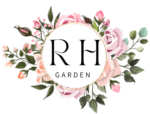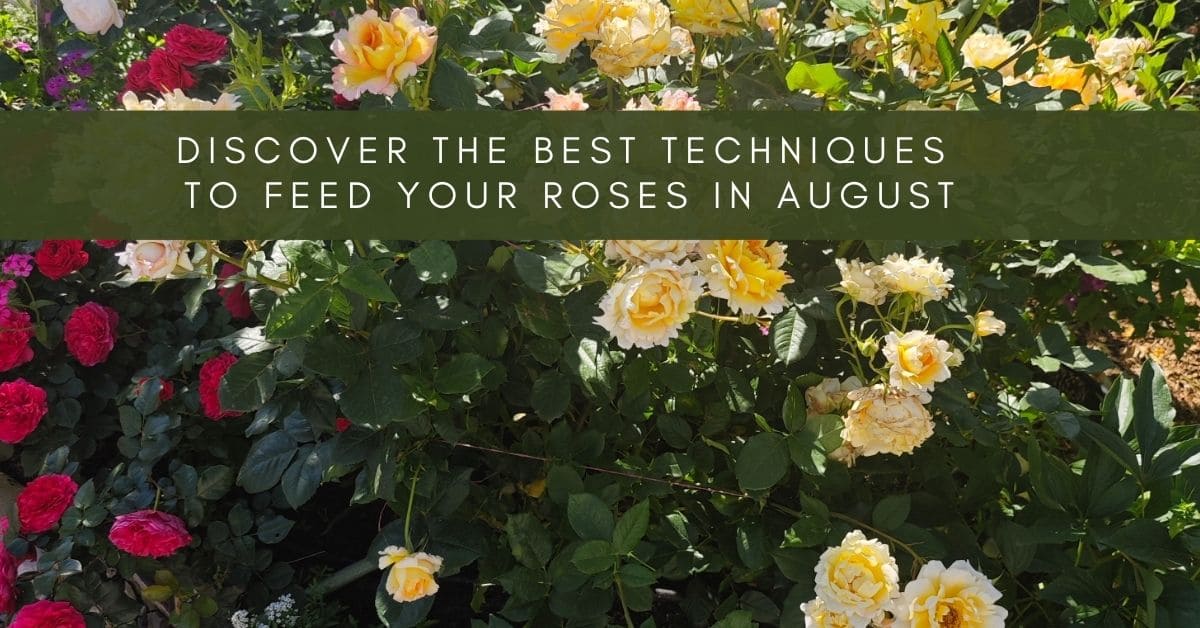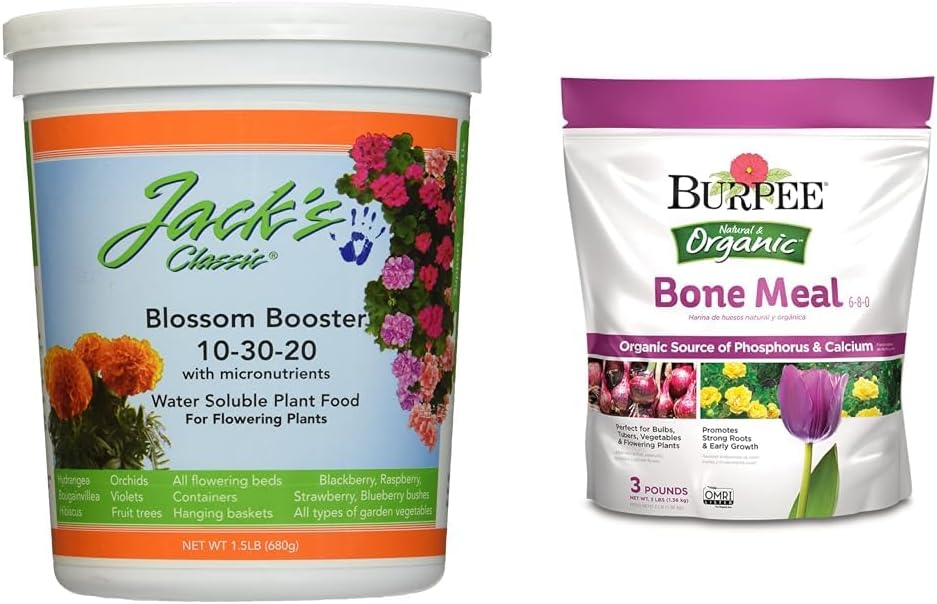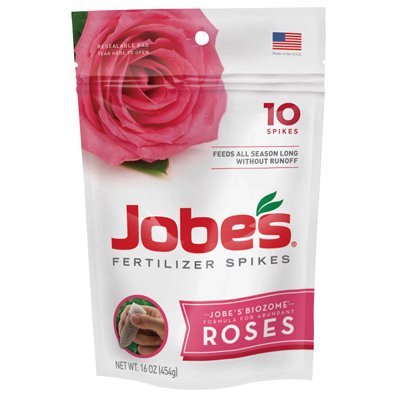As the summer days linger and the vibrant blooms of June and July fade, August arrives with gardening challenges and opportunities. For those who cherish the beauty and fragrance of roses, this month is crucial for ensuring our beloved plants remain healthy and ready for the upcoming seasons. In this article, I’ll share my journey and tips on feeding roses in August, ensuring they thrive well into the fall.
Importance of August Feeding
August is a pivotal month for rose care. By this time, roses have gone through several blooming cycles, and the summer heat may have affected their vigor. Feeding roses now helps to replenish essential nutrients that have been depleted and prepares them for the cooler months ahead.
In my early gardening days, I overlooked the importance of late-summer feeding, and I noticed my roses needed to be more robust come fall. Learning from experience, I now understand that August feeding is crucial for maintaining their health and promoting new growth.
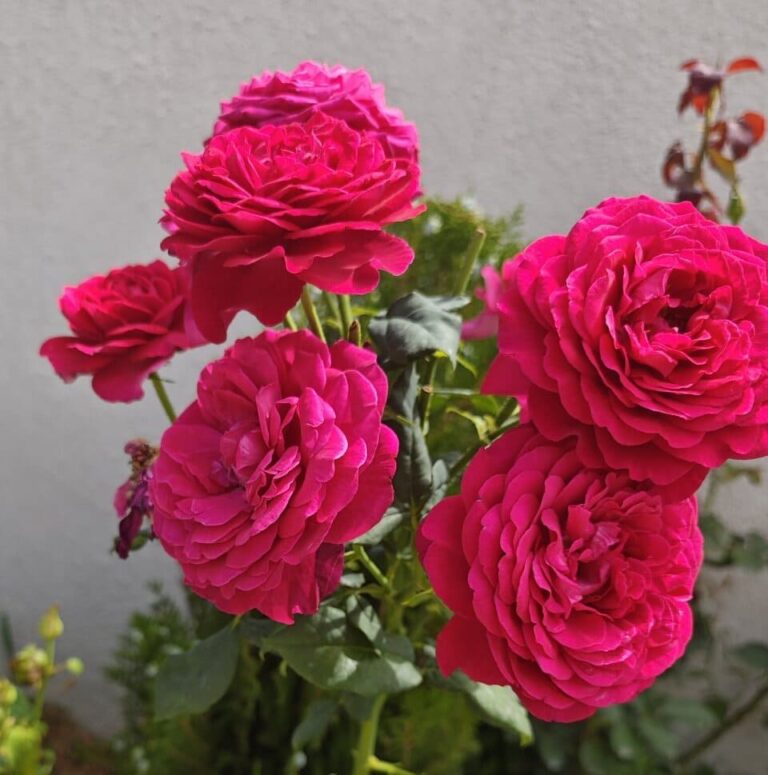
Choosing the Right Fertilizer
Balanced Fertilizers
When feeding roses in August, selecting the right fertilizer is paramount. A balanced fertilizer with equal parts nitrogen, phosphorus, and potassium (such as a 10-10-10 mix) is ideal for this time of year. This fertilizer supports plant health, encouraging strong root development, vibrant blooms, and disease resistance.
Organic Options
Compost and well-rotted manure are excellent choices for organic gardeners. These organic fertilizers deliver vital nutrients while enhancing soil structure and moisture retention. Applying a layer of compost around the base of your roses in August can be extremely advantageous.
Until mid-August, you can also feed with organic solutions: fermented grass infusion, aqueous compositions of rotted manure, and compost. Just spread rotted compost around the bush and sprinkle it with a little soil. Gradually decomposing organic matter will replenish the nutritional supply of rose bushes for a long time, helping them prepare for the upcoming winter.
Fertilizing Methods: Root vs. Foliar
Fertilizing can be done in two ways: root and foliar. With foliar feeding, nutrients enter the plants much faster, almost instantly, and within a couple of days, you can notice a positive effect. This method involves spraying a diluted fertilizer solution directly onto the leaves, allowing the nutrients to be absorbed quickly.
On the other hand, root feeding involves applying fertilizers to the soil, where the roots take them up over time. Both methods are effective; the choice depends on your preference and your roses’ immediate needs.
Feeding Schedule and Techniques
Timing is Everything
Feeding roses in August requires careful timing. It’s best to apply fertilizers early in the month, giving the plants ample time to absorb nutrients before the cooler weather sets in. Feeding too late in the season can lead to tender new growth that might not withstand the first frost.
I usually schedule my feeding routine for the first week of August. This way, I can monitor the roses and make necessary adjustments before the weather changes.
Application Methods
When applying fertilizer, be sure to follow the manufacturer’s instructions.
Granular fertilizers can be spread around the base of the plant and gently mixed into the soil. A thorough soaking around the root zone ensures the nutrients are readily available for liquid fertilizers.
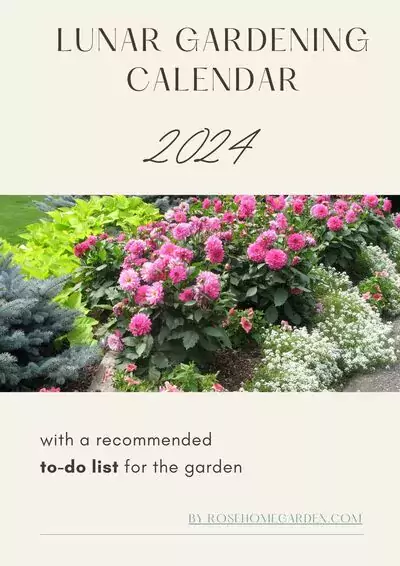
Get Your Free Lunar Gardener's Calendar 2024!
Join the Lunar Gardening Revolution! Subscribe now to receive our exclusive Free Lunar Gardener’s Calendar for 2024. Harness the power of the moon to optimize your planting, nurturing, and harvesting.
Nutrient Focus: Phosphorus and Potassium
In August, it’s essential to shift the focus of your feeding regimen. Nitrogen is no longer necessary as it promotes leafy growth, which isn’t beneficial heading into cooler months. Instead, we concentrate on phosphorus and potassium.
- Phosphorus: This nutrient is crucial for the rapid ripening of young shoots, the formation of new buds, and, most importantly, ensuring the growth of the root system. Phosphorus helps prepare the plant for the next blooming season.
- Potassium: Potassium aids in the plant’s resistance to the stress of cold temperatures, especially during late summer nights. It also enhances the immune properties of roses, increasing their resistance to diseases.
Roses require phosphorus, potassium, iron, and magnesium for optimal health. A nutrient deficiency can cause chlorosis, resulting in yellow leaves due to insufficient chlorophyll.
I recommend these fertilizers
Suitable Fertilizers for August
Suitable for feeding roses in August are any ready-made phosphorus-potassium mixtures for flowers, individual phosphorus and potassium fertilizers, subsequently mixed: simple or double superphosphate, potassium monophosphate, potassium sulfate, potassium magnesium (contains K, Mg, sulfur), magnesium sulfate, unique compounds for roses, industrial complex balanced fertilizers for autumn use, wood ash, etc.
Rotted manure can only be added until mid-August; it should not be added later, as it contains much nitrogen. When choosing a complex fertilizer, consider that there should be much less nitrogen and more phosphorus and potassium.
Ash is an excellent mineral organic fertilizer for roses. You can scatter it around the rose bushes to loosen the soil or prepare a solution for root feeding. Dissolve one glass of wood ash in one liter of hot water and then add ten liters of cold water.
Preparing for Fall and Beyond
As August wanes, your well-fed and well-cared-for roses will be in prime condition to face the cooler months ahead. Proper feeding and maintenance now set the stage for a strong fall performance and ensure your roses are ready to bloom again next spring.
Reflecting on my gardening journey, I realize how crucial August feeding has been for my roses’ long-term health and beauty. Each year, I look forward to this month to nurture and prepare my garden for the future.
With some dedicated care and attention, your roses will flourish with vibrant blooms and robust growth for many years to come.
Transform Your Rose
Garden with the Ultimate Planner
- Organized Planning: Comprehensive 12-month and weekly planning features keep your garden tasks in check.
Expert System: Dive into garden planning with a recommended to-do list and feeding schedule curated by Ann Devis. Our planner includes five weeks of daily planning pages per month, complete with notes and shopping lists. This ensures you take every critical task, helping your garden to thrive continuously.
- Track Progress: Document every step of your gardening journey with detailed notes and feeding schedules.
- Visual Appeal: Elegant design and high-quality materials make this planner a joy.
- Creative Freedom: Space for sketches and diagrams helps you design the garden of your dreams.
